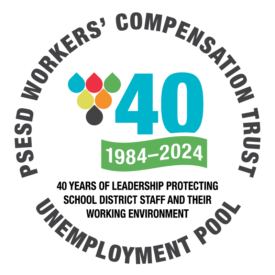 When an employee has an accident at work, it is imperative that his or her supervisor take the time to perform an accident investigation, regardless of whether that employee was injured in the incident or not. Accident investigations are an opportunity to uncover safety problems and correct them before they reoccur.
When an employee has an accident at work, it is imperative that his or her supervisor take the time to perform an accident investigation, regardless of whether that employee was injured in the incident or not. Accident investigations are an opportunity to uncover safety problems and correct them before they reoccur.
However, these investigations must be performed correctly to be useful. The following steps are a guide to performing an effective accident investigation.
Step 1: Gather information. Get a brief overview of the situation from witnesses and employees directly involved in the incident. Your goal is to collect enough information to understand the basics of what happened.
Step 2: Search for and establish facts. Examine the accident scene, looking for things that will help you understand what happened. This includes looking for dents, cracks, scrapes, or splits in equipment; tire tracks or footprints; spills or leaks; scattered or broken parts; and so on. Be sure to take photographs!
Step 3: Establish essential contributing factors. Contributing factors include environmental factors, design factors, systems and procedures, and human behavior. Design factors include workplace layout, design of tools and equipment, and maintenance. Systems and procedures factors include lack of systems and procedures, inappropriate systems and procedures, inadequate training procedures, and housekeeping. Human behavior is common in accidents and includes carelessness, rushing, and fatigue, among others.
Step 4: Find root causes. There are almost always multiple causes that contribute to an accident. Try not to settle on a single cause theory. Try to identify all of the underlying causes as well as the primary cause. For example, in the case of a fall, look beyond the obvious causes, such as a trip hazard. You should also consider possible causes such as inadequate lighting, whether the injured worker was carrying a large object that blocked his or her forward vision, or if the trip hazard was left by another employee who did not pick up after a task was completed.
For more information, see our article on Root Cause Investigations.
Step: 5 Determine corrective actions. Once you know what happened and why it happened, you are ready to determine how to fix the problem so that you avoid repeat accidents. Think about not only what is the most expedient action but also about which actions are most likely to permanently solve the problem(s) that led to the accident.
Step 6: Implement corrective actions. Put your corrective actions into place and follow up to make sure that they were sufficient to mitigate the hazard and/or address the issues.
What happens to this information after I submit the report?
Accident reports are reviewed by your district’s safety committee. It is a regulatory requirement that an accident report include an accident investigation to ensure that the hazard was addressed. If the supervisor’s investigation section is left blank or a detailed investigation was not completed, then the report must be sent back to the supervisor for completion.



